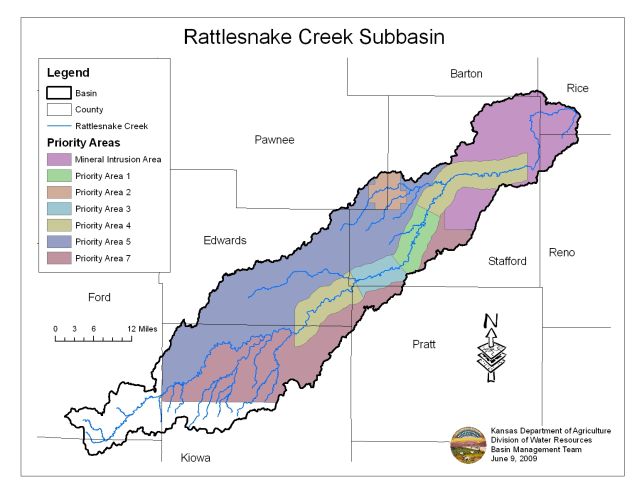In 1993, Rattlesnake Creek Subbasin residents and government agencies formed the Rattlesnake Creek/Quivira Partnership. The Partnership mission was to work together to develop and implement solutions to water resource problems within the subbasin. The partners agreed to use a community involvement approach. Water conservation would be the guiding principle to address water concerns. A combined effort would accomplish these goals. Each partner would recognize the different roles that the other partners do outside the Partnership. The Partnership -- Big Bend Groundwater Management District No. 5, Water Protection Association of Central Kansas, Kansas Department of Agriculture-Division of Water Resources, and U.S. Fish and Wildlife Service -- signed a Cooperative Agreement in June 1994.
Since the beginning, the Partnership has changed into a functional working group. The group has an understanding of the hydrologic conditions of the subbasin. The residents and government agencies have an established and trustful working relationship. This has made this group extremely effective. Because of this effort, the Partnership developed a Rattlesnake Creek Management Program. The program suggests a pro-active approach to maintain sustainable water supplies in the subbasin.

The program will not be a "quick fix" solution to the water resources problems in the subbasin. The management program addresses the long-term sustainability of the water resources. The management strategies proposed should address both the short and long-term water resources issues. The partners developed the program to allow for management alternatives that may take a few years to show measurable effects to have time to get up and running. This is necessary because the main methods of reducing water use are incentive-based programs. In order to be successful, the water users need to incorporate these programs into their existing operations.
Active participation by water users in the new management program is one of the main objectives of the Partnership. It is especially important during implementation. The Partnership has concentrated its efforts on a voluntary approach for lowering the total water use in the subbasin. This will occur many ways. First, through the use of the new management alternatives. Second, the partners want to implement an information/education program. Finally, they intend to enhance the compliance and enforcement effort. The partners defined several priority areas in the subbasin. In order to reach the goals in the management program, water users need to reduce water use in these areas. This program should result in the stabilization and reversal of the declining groundwater trends and enhanced streamflows.